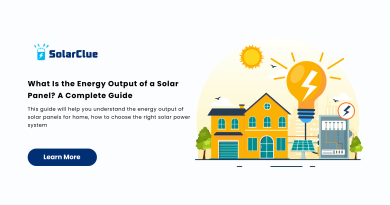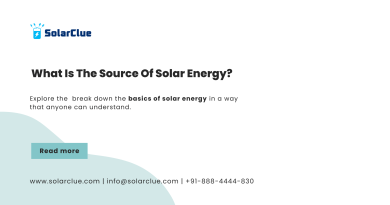What direction should solar panels face?
Determining the optimal direction for solar panel placement is crucial for maximizing energy production and ensuring the efficiency of your solar power system. The direction your solar panels face directly impacts the amount of sunlight they receive, which in turn affects the electricity generated. This guide will explore the factors influencing sunlight exposure, the benefits of different panel orientations, and strategies for optimizing energy production.
Table of Contents
- 1 The Ideal Direction for Solar Panels in Different Regions
- 2 The Impact of Latitude on Sunlight Exposure
- 3 Seasonal Variations and Their Effects on Solar Panel Output
- 4 The Role of Shading in Solar Panel Placement
- 5 Alternative Options for Non-South-Facing Roofs
- 6 Optimizing Solar Panel Tilt for Maximum Energy Production
- 7 The Importance of Considering Local Factors
- 8 The Impact of Panel Orientation on System Performance
- 9 Case Studies of Successful Solar Panel Installations
- 10 Tools and Software for Analyzing Solar Panel Orientation
- 11 Table: Comparison of Solar Panel Orientations
- 12 FAQ Section
- 13 Conclusion
The Ideal Direction for Solar Panels in Different Regions
South-Facing Panels
- Global Standard: In the Northern Hemisphere, the ideal direction for solar panels is generally south-facing. This orientation ensures the panels receive the most sunlight throughout the day, leading to maximum energy production.
- Southern Hemisphere: In the Southern Hemisphere, the optimal direction for solar panels is north-facing.
Alternative Orientations
- East and West: East-facing panels capture morning sunlight, while west-facing panels capture afternoon sunlight. These orientations can be beneficial if south-facing placement is not possible or if energy demand is higher in the morning or afternoon.
- Flat Roofs: For flat roofs, adjustable mounting systems can be used to angle the panels towards the optimal direction, typically south or north, depending on the hemisphere.
The Impact of Latitude on Sunlight Exposure
Latitude and Solar Angles
- Higher Latitudes: In higher latitudes (closer to the poles), the sun is lower in the sky, resulting in longer shadows and less intense sunlight. South-facing panels are crucial in these regions to maximize exposure to the low-angle sun.
- Lower Latitudes: Closer to the equator, the sun is higher in the sky, and panels can capture ample sunlight even with slight deviations from the south-facing direction.
Optimal Direction Based on Latitude
- Equatorial Regions: Near the equator, solar panels can be effective even when oriented slightly east or west, due to the more vertical angle of the sun.
- Polar Regions: In polar regions, where the sun remains low on the horizon, south-facing panels at a steep tilt angle are necessary to capture the most sunlight.
Seasonal Variations and Their Effects on Solar Panel Output
Sun Path Changes
- Summer vs. Winter: The sun’s path changes with the seasons, higher in the sky during summer and lower in winter. Panels that are fixed in a south-facing direction are generally optimized for year-round performance, but may produce more energy in the summer.
Adjusting Panel Tilt
- Seasonal Adjustments: In regions with significant seasonal variation, adjusting the tilt angle of the panels to match the sun’s altitude can optimize energy production. For example, a steeper tilt in winter and a flatter tilt in summer.
The Role of Shading in Solar Panel Placement
Shading Impact
- Reduced Efficiency: Shading from trees, buildings, or other obstructions can significantly reduce the efficiency of solar panels. Even partial shading on one panel can affect the output of an entire string of panels.
- Bypass Diodes: Modern solar panels are equipped with bypass diodes that help minimize the impact of shading, but avoiding shading altogether is ideal.
Identifying Shading Sources
- Solar Pathfinders: Tools like solar pathfinders can help identify potential shading throughout the year, allowing for better planning of panel placement.
- Pruning and Obstacle Removal: Regularly trimming trees or removing other obstacles can reduce shading and improve panel performance.
Alternative Options for Non-South-Facing Roofs
East and West Roofs
- Maximizing Production: For homes with east or west-facing roofs, splitting the array between the two orientations can help balance energy production throughout the day.
- Energy Usage Patterns: If your energy usage peaks in the morning or afternoon, orienting panels to the east or west can be beneficial.
North-Facing Roofs
- Lower Production: North-facing roofs (in the Northern Hemisphere) receive the least sunlight, leading to lower energy production. However, panels can still be installed with a tilt or with higher efficiency panels to compensate.
Ground-Mounted Systems
- Flexible Orientation: Ground-mounted solar systems provide the flexibility to position panels at the optimal angle and direction, making them a good option when roof orientation is not ideal.
Optimizing Solar Panel Tilt for Maximum Energy Production
Tilt Angle Importance
- Ideal Tilt: The optimal tilt angle for solar panels generally corresponds to the latitude of the installation site. For example, at a latitude of 30°, a 30° tilt angle is often recommended.
- Seasonal Adjustments: In some regions, adjusting the tilt angle seasonally can improve energy production.
Fixed vs. Adjustable Mounts
- Fixed Mounts: Fixed mounts are simpler and less expensive but offer no flexibility for adjusting the tilt.
- Adjustable Mounts: Adjustable mounts allow for seasonal tilt adjustments, which can optimize energy production but require more effort and higher initial costs.
The Importance of Considering Local Factors
Nearby Trees and Buildings
- Shading Analysis: Assess the impact of nearby trees and buildings that might cast shadows on your solar panels, especially during winter when the sun is lower in the sky.
- Long-Term Considerations: Consider future growth of trees or potential construction that might introduce new shading issues.
Local Weather Patterns
- Cloud Cover: In regions with frequent cloud cover, even small improvements in panel orientation can significantly affect energy production.
- Snow and Dust: In areas with heavy snowfall or dust accumulation, consider a steeper tilt angle to help keep the panels clean and clear of debris.
The Impact of Panel Orientation on System Performance
Energy Yield
- Orientation vs. Output: While south-facing panels generally provide the highest energy yield, the actual impact of orientation on output can vary depending on local conditions and the specific energy needs of the user.
System Design
- Microinverters and Optimizers: Using microinverters or power optimizers can help mitigate the impact of non-optimal orientations by maximizing the output of each individual panel.
Case Studies of Successful Solar Panel Installations
Case Study 1: Residential Installation in a Shaded Urban Area
- Location: New York City, NY, USA
- Challenge: Heavy shading from nearby buildings.
- Solution: Installed panels on both east and west-facing sections of the roof, using microinverters to optimize individual panel output. Pruned trees to reduce shading.
- Result: Achieved 85% of expected energy production despite challenging conditions.
Case Study 2: Ground-Mounted Solar System in a Rural Area
- Location: Rajasthan, India
- Challenge: Limited roof space and potential for dust accumulation.
- Solution: Installed a ground-mounted system with adjustable tilt angles, optimizing for seasonal sun path changes and easy maintenance.
- Result: Increased annual energy production by 10% compared to fixed-tilt systems in the area.
Tools and Software for Analyzing Solar Panel Orientation
PVWatts Calculator
- Function: Developed by the National Renewable Energy Laboratory (NREL), PVWatts estimates the energy production and cost savings of grid-connected PV systems based on location and orientation.
Solar Pathfinder
- Function: A tool that provides a graphical representation of potential shading throughout the year, helping users optimize the placement and orientation of solar panels.
HelioScope
- Function: A solar design software that helps in planning and optimizing solar panel systems by simulating energy production based on different orientations and tilts.
Table: Comparison of Solar Panel Orientations
| Orientation | Benefits | Drawbacks |
|---|---|---|
| South-Facing | Maximum energy production in the Northern Hemisphere | Requires clear, unobstructed exposure to the south |
| East-Facing | Captures morning sunlight, good for morning energy demand | Lower overall energy production compared to south-facing |
| West-Facing | Captures afternoon sunlight, good for afternoon peak demand | Lower overall energy production compared to south-facing |
| North-Facing | Applicable in the Southern Hemisphere or with specific design | Least effective in the Northern Hemisphere |
| Flat Roof with Tilt | Adjustable tilt for optimal exposure | Requires additional mounting equipment |
FAQ Section
1. What is the best direction for solar panels?
In the Northern Hemisphere, south-facing panels are generally the best for maximum energy production. In the Southern Hemisphere, panels should face north.
2. Can solar panels work effectively if they don’t face south?
Yes, solar panels can still work effectively if they face east or west, though they may produce less energy overall. With proper design and technology, even non-optimal orientations can be viable.
3. How does shading affect solar panel performance?
Shading can significantly reduce solar panel performance, especially if it affects multiple panels in a series. Bypass diodes and microinverters can help mitigate this impact.
4. Is it worth adjusting the tilt angle of my solar panels?
Adjusting the tilt angle can optimize energy production, especially in regions with significant seasonal sun path variations. However, fixed-tilt systems are often more cost-effective and easier to maintain.
Conclusion
The direction and orientation of solar panels play a critical role in determining the efficiency and output of a solar energy system. By understanding the factors that influence sunlight exposure, such as latitude, seasonal variations, and shading, you can make informed decisions to maximize your system’s performance. Whether you have a south-facing roof or need to explore alternative orientations, this guide provides the insights and strategies needed to optimize your solar panel placement for maximum energy production.



